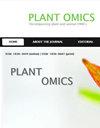Root proteome alterations in sugarcane promoted by the regrowth cycle in commercial production
Q3 Agricultural and Biological Sciences
引用次数: 0
Abstract
The decrease in agricultural productivity in successive cutting of sugarcane plants is associated with several extrinsic and intrinsic factors. However, no studies have focused on the physiological potential of sett roots in successive cuts in sugarcane culture. There have been no proteomic studies on sugarcane sett roots at different stages of cutting. In this study, the UPLC-ESI-TOF-MS system and bioinformatics tools were used to identify proteins of sett roots in the first and fifth cuts of sugarcane cultivar RB966928 in the sprouting stage. Differences in the proteome of sett roots of RB966928 in the first and fifth cuts detected in this study supports the hypothesis that the proteome of sett roots may change after successive cuts in sugarcane culture. A reduction in the number of proteins was observed in the roots of the fifth cut, whereas 34% of proteins, identified exclusively in the first cut, were absent in the fifth cut. Proteome analysis of sett roots in the first and fifth cuts showed that the changes after successive cuts were quantitative (number of proteins) and mainly qualitative. In this study, the detailed list of proteins identified in the first cut but absent in the fifth cut is relevant. The findings of this study may aid further research that employ biotic or abiotic elicitors to induce gene expression of essential proteins absent in sett roots of the fifth cut, and thus increasing the agricultural productivity and longevity of cane fields商业生产中甘蔗再生周期对根系蛋白质组的影响
甘蔗植株连续切割导致农业生产力下降与几个外在和内在因素有关。然而,没有研究集中在甘蔗栽培中连续扦插的sett根的生理潜力。目前还没有对甘蔗sett根在不同切割阶段的蛋白质组学研究。本研究利用UPLC-ESI-TOF-MS系统和生物信息学工具,对甘蔗品种RB966928发芽期第1和第5次扦插的sett根进行了蛋白质鉴定。本研究中检测到的RB966928在第一次和第五次切割中的sett根蛋白质组差异支持了这样一种假设,即在甘蔗培养中连续切割后sett根的蛋白质组可能会发生变化。在第五次切割的根中观察到蛋白质数量的减少,而仅在第一次切割中鉴定的34%的蛋白质在第五个切割中不存在。对第一次和第五次扦插的sett根的蛋白质组分析表明,连续扦插后的变化是定量的(蛋白质数量),主要是定性的。在这项研究中,在第一次切割中鉴定但在第五次切割中缺失的蛋白质的详细列表是相关的。这项研究的发现可能有助于进一步的研究,即利用生物或非生物诱导子诱导第五次扦插的sett根中不存在的必需蛋白质的基因表达,从而提高农业生产力和甘蔗田的寿命
本文章由计算机程序翻译,如有差异,请以英文原文为准。
求助全文
约1分钟内获得全文
求助全文
来源期刊

Plant Omics
生物-植物科学
CiteScore
1.30
自引率
0.00%
发文量
0
审稿时长
6 months
期刊介绍:
Plant OMICS is an international, peer-reviewed publication that gathers and disseminates fundamental and applied knowledge in almost all area of molecular plant and animal biology, particularly OMICS-es including:
Coverage extends to the most corners of plant and animal biology, including molecular biology, genetics, functional and non-functional molecular breeding and physiology, developmental biology, and new technologies such as vaccines. This journal also covers the combination of many areas of molecular plant and animal biology. Plant Omics is also exteremely interested in molecular aspects of stress biology in plants and animals, including molecular physiology.
 求助内容:
求助内容: 应助结果提醒方式:
应助结果提醒方式:


